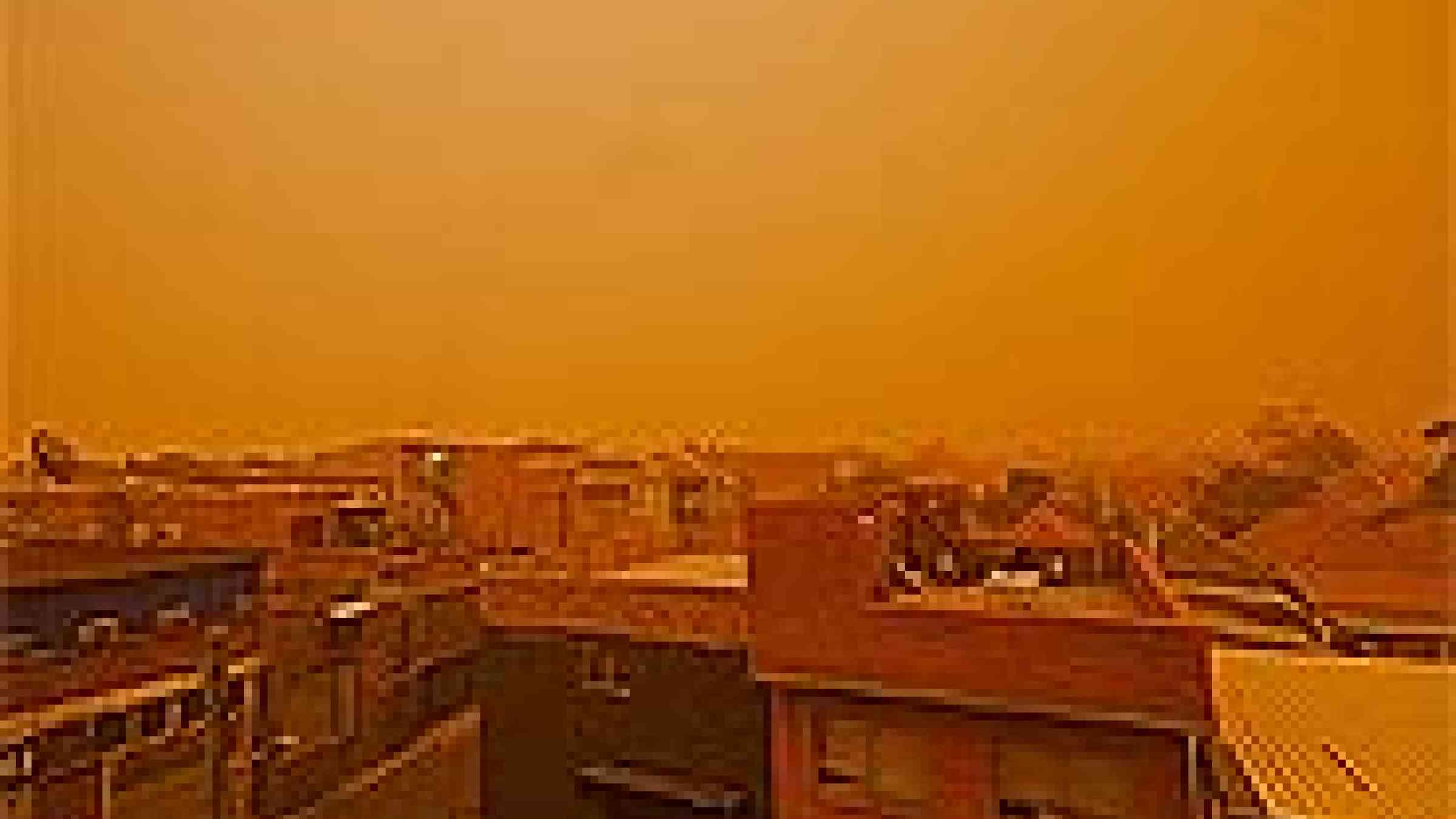
The east coast of Australia including Sydney was hit yesterday by a vast red sand and dust storm originating from interior Australia. According to the Australian Bureau of Meteorology, a cold front in New South Wales caused severe thunderstorms and gale-force winds, whipping up the dust from a drought stricken part of Australia, bringing air traffic to a halt and obscuring the famous Sydney opera house from view. The storm also disrupted ferry and automobile transport and caused a large increase in incidences of asthma and other respiratory problems. It also stripped soil from agricultural areas inland and deposited it in the coastal ocean.
“The reported level of suspended particulate mass (PM10) in highly populated Sydney was around 1000 times higher than on a clear day” said WMO Expert Len Barrie. “It is fifty times higher than the well established level beyond which impacts on human health are known to occur. Sand and dust storms of such intensity are often seen in other parts of the world, particularly in Asia and Northern Africa. The dust is transported well beyond the continental source regions across oceans to other continents, and plays an important role in weather, climate, ocean ecosystems and human health.”
The World Meteorological Organization is implementing the Sand and Dust Storm Warning Advisory and Assessment System (SDS-WAS). The goal is to enhance the ability of countries to deliver timely and quality sand and dust storm forecasts, observations, information and knowledge to users through an international partnership of research and operational communities. Today, there are twelve SDS-WAS operational or research sand and dust forecasting centers around the world. By planning ahead, one can reduce the impacts on health, agriculture, aviation, as well as on the general functioning of urban society.